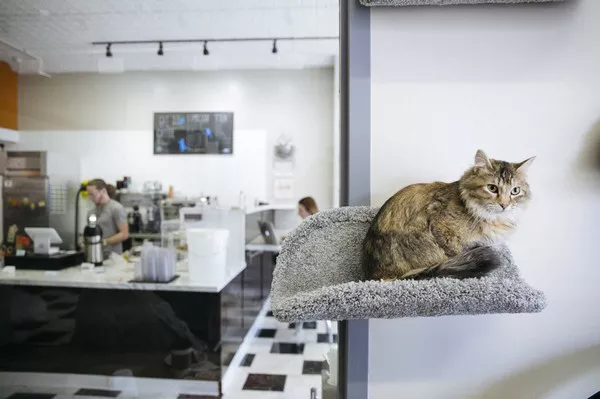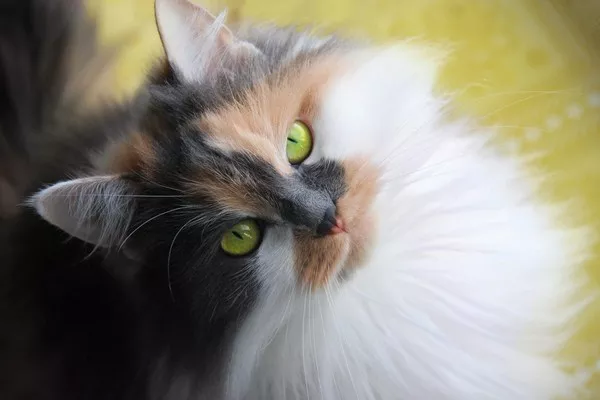Calico cats, with their distinctive tricolor coats, evoke a sense of charm and mystery. While domesticated calico cats enjoy the convenience of carefully prepared meals, it’s intriguing to explore the dietary preferences and hunting instincts that their wild counterparts exhibit. In this article, we delve into the culinary adventures of calico cats in the wild, shedding light on their natural diet, hunting strategies, and the role of environment in shaping their eating habits.
Understanding the Wild Roots of Calico Cats
The Evolutionary Background:
1. Origins of the Domestic Cat: The domestic cat, including the calico variety, traces its roots to the wildcat (Felis silvestris lybica), which was domesticated by humans thousands of years ago. Wildcats, native to various regions around the world, were solitary hunters with well-developed hunting instincts.
2. Calico Coat in the Wild: In the wild, the calico coat pattern observed in domestic calico cats is a rarity. This unique coat variation, characterized by a mix of orange, black, and white fur, is a product of specific genetic combinations. While calico cats in the wild may not always display the tricolor pattern seen in domestic calicos, their genetic diversity and hunting instincts remain prominent.
Natural Diet in the Wild:
1. Obligate Carnivores: Like all domestic cats, calico cats in the wild are obligate carnivores, meaning their diet primarily consists of meat. Their bodies are adapted to digest and derive essential nutrients from animal tissues, emphasizing the importance of a meat-based diet for their overall health.
2. Small Mammals and Birds: Wild calico cats exhibit hunting behaviors focused on small mammals and birds. They are adept predators, relying on their keen senses, sharp claws, and strong jaws to capture and consume prey.
The Culinary Palette of Calico Cats in the Wild
Small Mammals:
1. Mice and Rats: In the wild, calico cats, like their wildcat ancestors, are skilled hunters of mice and rats. These small mammals are abundant in many ecosystems and provide a readily available source of protein and essential nutrients.
2. Squirrels and Chipmunks: Calico cats may also target larger small mammals, such as squirrels and chipmunks. These agile hunters use their stealth and agility to stalk and capture these arboreal creatures.
3. Rabbits: In certain habitats, calico cats may encounter rabbits as part of their prey selection. While capturing larger prey requires more skill, calico cats are equipped with the instinctive ability to secure a variety of prey sizes.
Birds:
1. Songbirds: Calico cats are known for their agility and dexterity, making them effective hunters of songbirds. They use their keen eyesight and swift movements to capture birds in flight or while perched.
2. Ground-Nesting Birds: Many bird species that nest on the ground are susceptible to predation by calico cats. The cats use their stealth to approach nesting sites and employ a combination of stalking and pouncing techniques to secure their avian prey.
3. Waterfowl: In environments near water bodies, calico cats may target waterfowl, including ducks and smaller water birds. Their hunting strategies adapt to the specific challenges presented by aquatic environments.
Insects and Invertebrates:
1. Insect Hunting: Calico cats in the wild may engage in insect hunting, capturing a variety of insects for both nourishment and entertainment. This behavior is not solely driven by nutritional needs but also serves as a form of environmental enrichment.
2. Arachnids: Spiders and other arachnids may become prey for calico cats exploring their surroundings. While not a primary source of nutrition, these encounters with invertebrates contribute to the cat’s overall hunting repertoire.
Adaptation to Local Ecosystems:
1. Regional Variances: The dietary preferences of calico cats in the wild can vary based on the ecosystems they inhabit. Cats in forested areas may have different prey options compared to those in urban or semi-arid environments.
2. Nocturnal Hunting: Calico cats, like many feline species, are skilled nocturnal hunters. Their adaptation to low-light conditions enhances their ability to stalk and capture prey during the cover of darkness.
Hunting Strategies of Calico Cats
Stalking and Ambushing:
1. Stealthy Approach: Calico cats in the wild employ stalking as a primary hunting strategy. They use their camouflage and patience to get as close to their prey as possible without being detected.
2. Ambushing: Once in striking range, calico cats rely on their powerful hind legs and sharp claws to pounce on their prey swiftly. This ambush technique minimizes the chances of the prey escaping.
Pouncing and Catching:
Precision in Motion: The calico cat‘s ability to pounce with precision is a key hunting skill. This technique allows them to cover short distances quickly and catch agile prey, such as birds or rodents, with minimal effort.
Bite and Nape:
1. Swift Capture: After pouncing on their prey, calico cats typically go for a bite to the nape of the neck. This method is both efficient and humane, ensuring a quick and humane capture.
2. Minimizing Struggle: Biting the nape of the neck helps minimize the struggle of the prey, reducing the risk of injury to the cat and ensuring a successful capture.
Tree Climbing and Aerial Hunting:
1. Arboreal Skills: In environments with trees, calico cats may exhibit climbing skills, allowing them to pursue prey in elevated locations. This behavior is particularly observed when hunting birds or squirrels.
2. Aerial Pouncing: Cats in trees may utilize aerial pouncing, leaping from branches to capture flying insects or birds. This dynamic hunting strategy showcases their agility and adaptability.
3. Treetop Observation: Calico cats may also use elevated positions for observational purposes, scanning their surroundings for potential prey or detecting potential threats.
The Role of Environmental Factors
Availability of Prey:
1. Ecosystem Dynamics: The availability of prey in a specific ecosystem influences the dietary choices of calico cats. In ecosystems rich in small mammals, calico cats may primarily focus on hunting rodents, while those near water bodies may target fish or waterfowl.
2. Seasonal Variations: Seasonal changes impact the abundance and availability of prey. Calico cats adapt their hunting strategies and dietary preferences based on the seasonal dynamics of their environment.
Human Influence:
1. Urban Environments: Calico cats in urban or suburban environments may encounter different challenges and opportunities compared to those in more natural settings. Urban calico cats may supplement their diet with scavenging or encounters with smaller prey such as insects and rodents.
2. Human-Provided Food: In some instances, calico cats in proximity to human settlements may opportunistically feed on food provided by humans, such as scraps or leftovers. This behavior highlights the adaptability of calico cats to diverse environments.
Territorial Dynamics:
1. Establishing Territories: Calico cats in the wild establish territories that they actively patrol and defend. The size and location of territories impact the variety and abundance of prey available to them.
2. Avoiding Competition: To avoid competition with other cats or predators, calico cats may strategically select hunting grounds within their territories. This territorial behavior helps ensure a consistent and reliable food supply.
Conclusion
Exploring the culinary adventures of calico cats in the wild unveils the intricate relationship between these feline hunters and their natural environment. The calico cat’s diet is shaped by evolutionary adaptations, regional ecosystems, and hunting instincts inherited from their wild ancestors. From stalking and ambushing to climbing trees and engaging in aerial pursuits, calico cats showcase a diverse set of hunting skills that contribute to their survival in the wild.
While domestic calico cats enjoy the comfort of a bowl of carefully formulated cat food, understanding their wild roots provides valuable insights into their natural behaviors and instincts. The tricolor coat of the calico cat may be a visual delight in our homes, but its roots in the wild connect us to the rich tapestry of feline evolution and the enduring spirit of these captivating and resilient hunters.



























